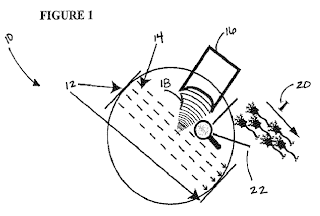Fig. 1 (Roskams-Edriset al., 2017). The number of patents implicating specific brain regions has risen from 1976 to the mid 2010s. Results were obtained by searching The Lens patent database (http://lens.org/).
“What is the ethical value of awarding patent rights that implicate regions of the brain?”
Do the applicants intend to patent the function of specific brain areas? This absurd scenario was the first thing that came to mind. The murky waters of neurotech patent law were explored by a group of neuroethics and intellectual property experts (
Roskams-Edriset al., 2017) who noted several problems:
The first practical challenge to patents that relate to brain regions is well known to patent law: the danger of overbroad, vague, or obvious claims.
One egregious example is
US 9327069 B2,
Methods and systems for treating a medical condition by promoting neural remodeling within the brain. The language is extremely vague (and redundant):
Methods of treating a medical condition include applying at least one stimulus to a stimulation site within the brain of a patient with an implanted stimulator in accordance with one or more stimulation parameters. The [sic] at least one stimulus is configured to promote neural remodeling within the brain of the patient. Systems for treating a medical condition include an implantable stimulator configured to apply at least one stimulus to a stimulation site within the brain of a patient in accordance with one or more stimulation parameters...
What kind of stimulus will “promote neural remodeling?” All of them. As stated in the Detailed Description:
The stimulus may include an electrical stimulation current, one or more drugs, gene infusion, chemical stimulation, thermal stimulation, electromagnetic stimulation, mechanical stimulation, and/or any other suitable stimulus.
What brain conditions can be treated? All of them.
Many medical conditions have been linked to faulty neural connections and/or abnormal developmental pruning of axons, dendrites, and synapses within the brain. Such medical conditions include, but are not limited to, autism, psychological disorders (e.g., schizophrenia, compulsive behaviors, and depression), neurodegenerative diseases (e.g., Huntington's disease, Alzheimer's disease, and amyotrophic lateral sclerosis), and chromosomal abnormalities (e.g., Down syndrome and Klinefelter syndrome).
Finally, what are the implicated brain regions? You guessed it.
Nearly every brain area has been implicated in the disorders listed above. In particular, it is believed that faulty neural connections and/or abnormal developmental pruning of neural structures within the temporal lobe, limbic system, pituitary gland, brainstem, cerebral cortex, and/or any other midbrain structure are at least in part responsible for the deficits of one or more of the disorders listed above.
The
Claims that apply in this patent (e.g., stimulation sites and medical conditions) are slightly more specific, but still outlandish:
4. ... said stimulation site comprises at least one or more of a temporal lobe, cerebral ventricle, structure within a limbic system, pituitary gland, brainstem, and cerebral cortex.
5. ...said medical condition comprises at least one or more of autism, a psychological disorder, a neurodegenerative disease, a chromosomal abnormality, a bad habit, and an injury to said brain.
A bad habit??
100,000,000 Hz
Even better is Patent
US 9,050,463 (
Systems and methods for stimulating cellular function in tissue), which touts the application of electrical fields with frequencies of 100,000,000 Hz and above to the entire nervous system...
....various structures within the brain or nervous system including but not limited to dorsal lateral prefrontal cortex, any component of the basal ganglia, nucleus accumbens, gastric nuclei, brainstem, thalamus, inferior colliculus, superior colliculus, periaqueductal gray, primary motor cortex, supplementary motor cortex, occipital lobe, Brodmann areas 1-48, primary sensory cortex, primary visual cortex, primary auditory cortex, amygdala, hippocampus, cochlea, cranial nerves, cerebellum, frontal lobe, occipital lobe, temporal lobe, parietal lobe, sub-cortical structures, spinal cord, nerve roots, sensory organs, and peripheral nerves.
...to treat all known diseases:
Such pathologies that may be treated include but are not limited to Multiple Sclerosis, Amyotrophic Lateral Sclerosis, Alzheimer's Disease, Dystonia, Tics, Spinal Cord Injury, Traumatic Brain Injury, Drug Craving, Food Craving, Alcohol Craving, Nicotine Craving, Stuttering, Tinnitus, Spasticity, Parkinson's Disease, Parkinsonianism, Obsessions, Depression, Schizophrenia, Bipolar Disorder, Acute Mania, Catonia, Post-Traumatic Stress Disorder, Autism, Chronic Pain Syndrome, Phantom Limb Pain, Epilepsy, Stroke, Auditory Hallucinations, Movement Disorders, Neurodegenerative Disorders, Pain Disorders, Metabolic Disorders, Addictive Disorders, Psychiatric Disorders, Traumatic Nerve Injury, and Sensory Disorders.
Oddly, the specific
Claims in this patent include an indication limited to Parkinson's disease. But the list of targeted brain regions (see above) is irrelevant in this disorder.
Roskams-Edriset al. (2017) conclude with a warning drawn from previous efforts to patent human genes: “brain biomaterial and brain processes cannot be invented and, like genes, they similarly ought not to be owned.” There should be no legal rights to brain regions, or else we risk losing autonomy over our own thoughts and actions.
Reference
Roskams-Edris, D., Anderson-Redick, S., Kiss, Z., & Illes, J. (2017). Situating brain regions among patent rights and moral risks. Nature Biotechnology, 35 (2), 119-121. DOI: 10.1038/nbt.3782



















